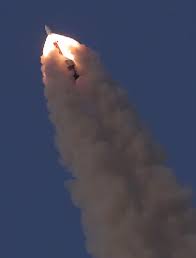Crew Escape System:

ISRO has developed a cost-effective, single-stage Test vehicle powered by the Vikas engine to validate the crew escape system (CES).
- Crew Escape System is an emergency escape measure designed to quickly pull the crew module along with the astronauts to a safe distance from the launch vehicle in the event of a launch abort.
- The CES is classified into two types based on the way it extracts the crew module:
- It is used in Gaganyaan, where the CES pulls the crew module away from the launch vehicle;
- It is used in vehicles like SpaceX’s Falcon 9, where the crew module is pushed away using compact, high-thrust liquid-fuel engines.
- The U.S.’s Saturn V, Russia’s Soyuz, and China’s Long March vehicles also use puller-type CES designs.
- Once the CES has moved the crew module a safe distance away from the failing vehicle, the module will be released and decelerated by a multistage parachute system.
- It will reduce the module’s velocity in steps, ensuring it splashes down safely in the sea without exceeding the crew’s physiological limits upon impact.
- Typically, the crew will remain inside the module until splashdown.
- The Integrated Vehicle Health Management system (IVHM), which is a network of sensors, electronics, and software, will aid in taking a decision to activate the CES when a contingency arises.
- It will monitor all vital parameters of vehicle systems and crew health in real time.
- Based on the synthesised information and the flight regime, it will ensure prompt anomaly detection, minimise false alarms, and activate the CES early enough to protect the crew.




